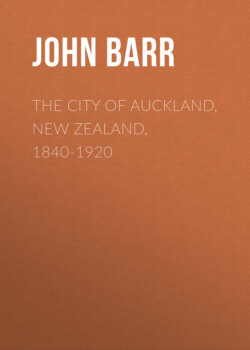Читать книгу The City of Auckland, New Zealand, 1840-1920 - John Barr - Страница 11
На сайте Литреса книга снята с продажи.
V
The Arawa Canoe
ОглавлениеTable of Contents
The Arawa people at an early date also contributed its quota to the population of Tamaki. Arriving on the East Coast (at the same time and place as the Tainui) this canoe likewise made a coastal exploration. Eventually its people settled down at Maketu (Bay of Plenty), Tamatekapua, their leader, having remained at Moehau (Cape Colville), where he died. From there his children spread throughout the Coromandel peninsula and the islands of the Gulf, and were known as Ngati-huarere (Huarere being Tamatekapua’s grandson). We are told that Ihenga, a brother of Huarere, lived at Tamaki for some time, and at Kaipara. These early Arawas left descendants here, and through them the Tamaki chiefs thus claimed an Arawa lineage. The Ngati-Huarere are said to have occupied fortified villages at Orakei, Fort Britomart, Queen Street, Three Kings and other places, until the final conquest of the Tamaki Isthmus, as hereinafter related. Kahumatamomoe, another son of Tamatekapua, having quarrelled with his brothers and relatives at Maketu, came to Tamaki, and is said to have lived at Orakei with other relatives already settled there, hence the name of the village at Orakei—“Okahu.” Going on to Kaipara, he permanently resided there.
